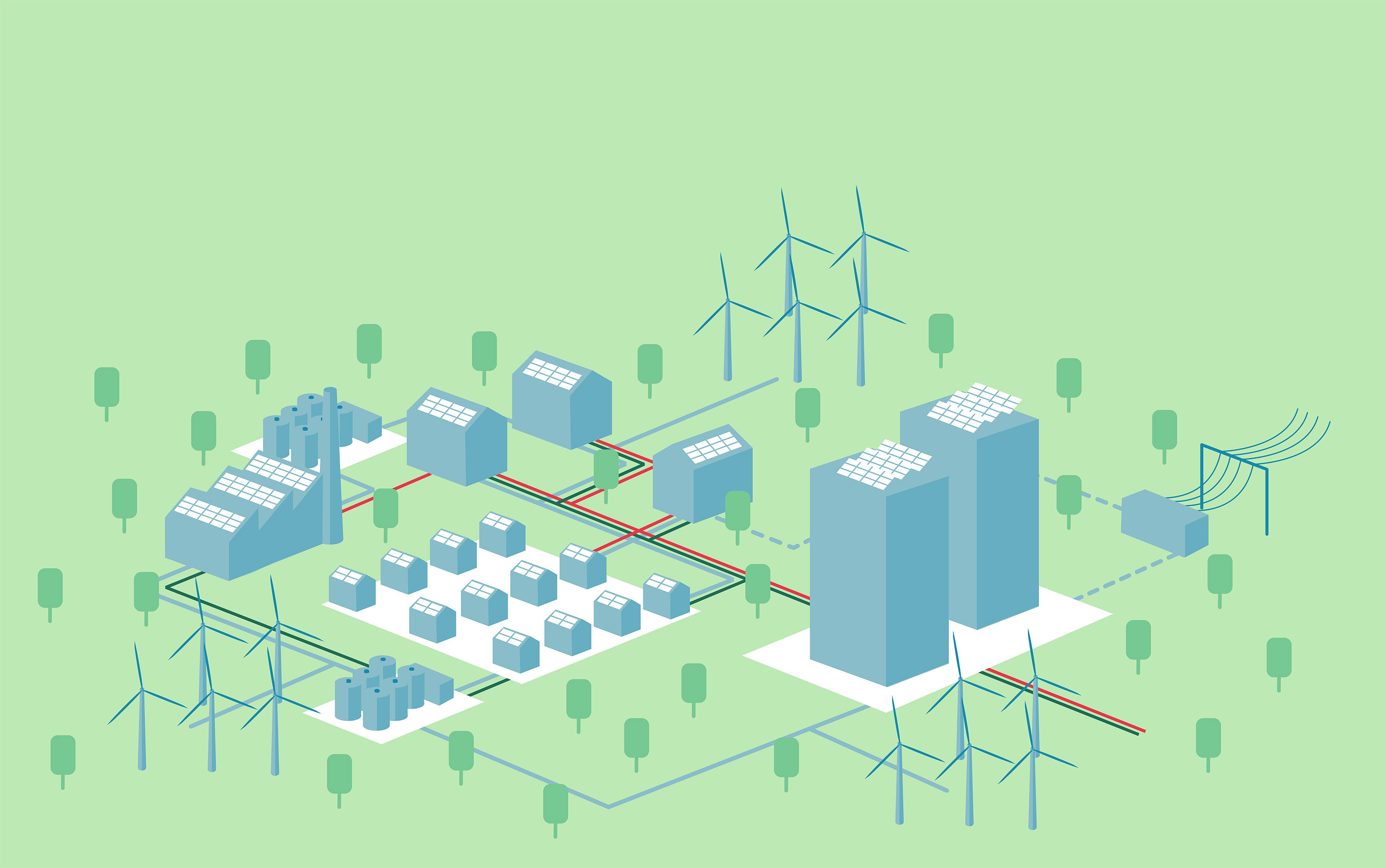5.0.1 Introduction to Module 5 of IIES01x
Course subject(s)
5. Multi-carrier Grid Integration
Welcome to the final module of the course Technology of Intelligent and Integrated Energy Systems! In the previous module – Intelligent Control and Integration of Heating in Energy Systems, you have learned about heating and cooling grids – the energy source, the technologies involved in domestic use, thermal energy storage, and the demand and supply trends compared to electricity. You also learned about “smart” heating networks planned for the future.

Welcome to the final module of the course – Multi-carrier Grid Integration! In this module, you will learn how to integrate all the different components of the energy system into a tightly integrated yet flexible energy system.
The energy system of the past was largely analog and human-controlled. Over the past few decades, improvements in computing and processing have enabled us to develop “smart” electronic control systems in place of manual control.
The problem, at present, consists of two parts – two sides of the same coin so to say. On one side, we have a lot of room for improvement in advancements in “intelligence” – computing power. This will dictate how large of an energy system we will be able to control and how fine of a resolution of the energy system can be processed. This, of course, is irrelevant if the components of the energy system are incompatible in the first place. Thus, the second side of the coin – the compatibility of the components of the energy system and the strategy to integrate them.
This is the focus of the final module. The energy system is a complex, intricate puzzle that has several parameters and variables. The sheer complexity makes a straightforward method for integration impossible and unfeasible with the technologies of today. As seen in previous modules of the course, each primary component – the renewable energy sources and the electricity grid, energy storage technologies, electric vehicles, heating and cooling networks – has its own characteristic dynamic behavior that is strongly dependent on natural availability and/or domestic usage patterns. Thus, the problem at hand: Can the different components of the energy system be integrated and unified so as to maximize efficiency and control while minimizing interference in their operating patterns?
The short answer is yes. But a more realistic answer would be: Yes, but it’s complicated.
Do you want to delve more into the answer to this question? Then, let’s get started with the final module of the course!
This module will discuss the following topics:
- Application of “intelligence” in planning and operating a multi-energy system
- Conversion of energy across the multi-energy system
- Co-simulation of a multi-energy system
- Significance of model fidelity in energy conversion
- Stability strategies in the integration of multiple energy systems
This module will be concluded with a highly detailed industry perspective lecture by Arjan van Voorden, Expert – Asset Management at Stedin. Arjan presents his experience, as a Distribution System Operator (DSO) operating in the Netherlands, regarding energy transition through scenarios at scales from a country all the way up to the whole world. Arjan also presents the Energy Transition Model (ETM), an algorithm used to efficiently integrate and synergize different energy carriers. Excited to know more?
Let’s go!

Technology of Intelligent and Integrated Energy Systems by TU Delft OpenCourseWare is licensed under a Creative Commons Attribution-NonCommercial-ShareAlike 4.0 International License.
Based on a work at https://online-learning.tudelft.nl/courses/technology-of-intelligent-and-integrated-energy-systems/



